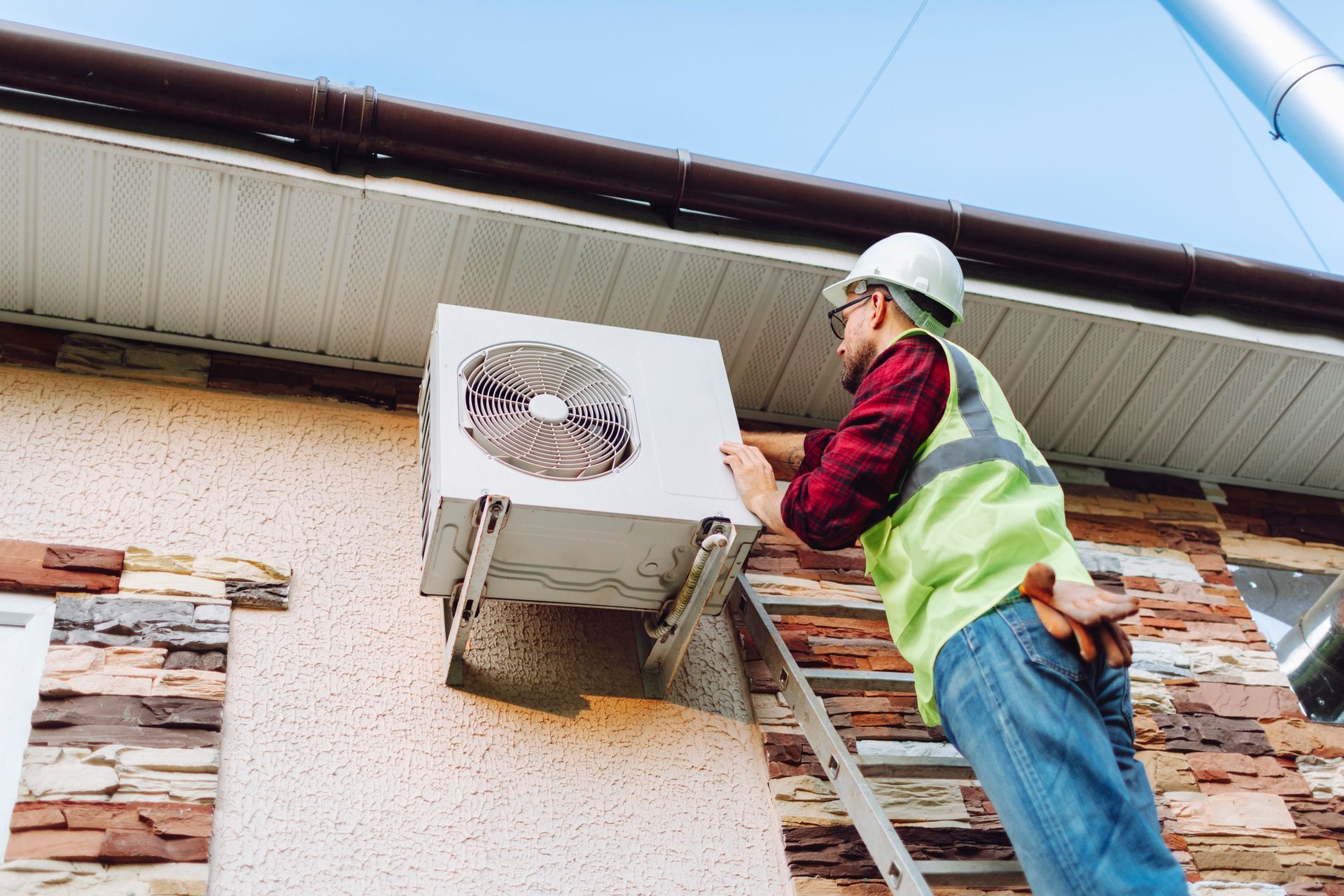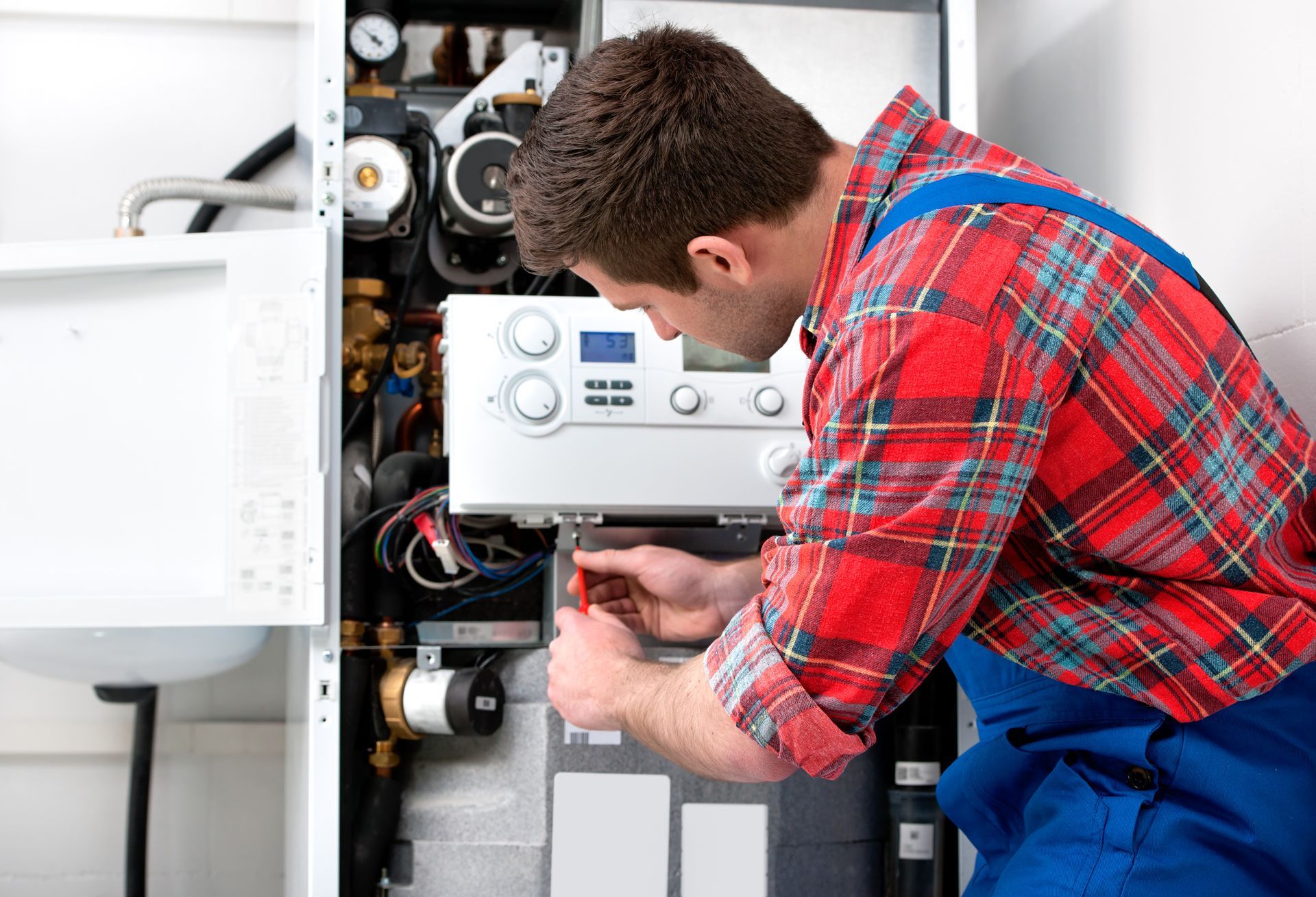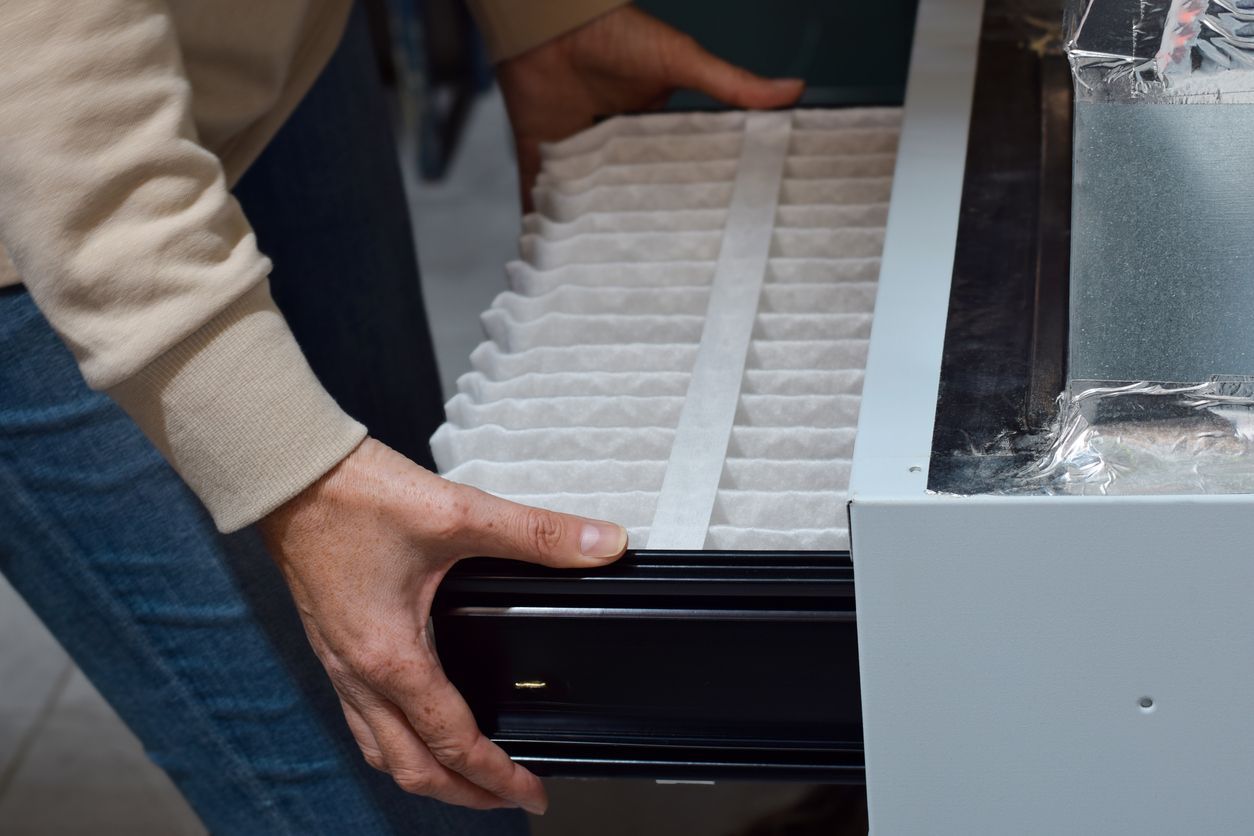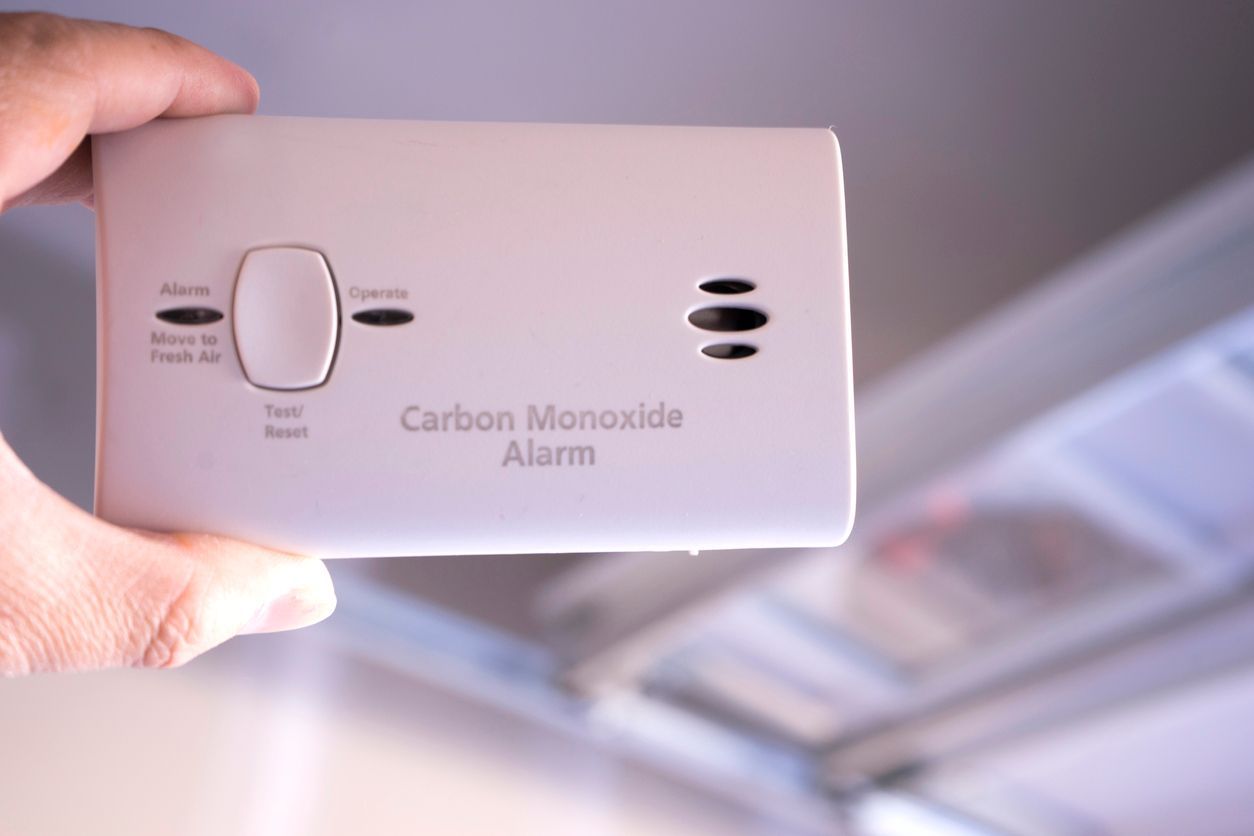AIR CONDITIONING SERVICES IN SAN MARCOS, TX
AIR CONDITIONING SERVICES IN SAN MARCOS, TX
AND THE SURROUNDING AREA
With so many of us working from home, more people are trying to find ways to stay healthy in their own houses. One concern is “sick building syndrome”. When your home isn’t properly protected from bacteria, dust, pollen, viruses, biogrowth, and microbes, they can circulate throughout your house, causing perpetual illness.
There are a number of ways to reduce or eliminate airborne particles that can cause sickness. UV air sanitizers are one such proposed solution. How do they work? Do they clean the air effectively? We’re going to answer these questions, and more, in this breakdown of UV air sanitizers.
An ultraviolet background
As the name suggests, UV air sanitizers use ultraviolet light – specifically, UV-C light. You’ve probably heard of UV rays – they’re what causes sunburn, and why we need to wear sunblock when we’re outside.
What is UV light? To understand that, you need to know a bit about light. Light is complicated, but we’ll keep things simple here and treat it as a waveform. You can measure the distance between the crest of each wave in a given beam of light – this distance is called the wavelength. It’s measured in nanometers.
Visible light has a wavelength of 400-700 nanometers – the highest wavelength can be seen as red, while the shortest is seen as violet.
Ultraviolet light, then, has a wavelength of below 400 nanometers. You can’t sense ultraviolet light, but it can have a profound effect on living things. Ultraviolet light is split into three categories:
UV-A light, which has a wavelength of 315 to 400 nanometers
UV-B light, which has a wavelength of 280 to 315 nanometers
UV-C light, which has a wavelength of 100 to 280 nanometers
The shorter the wavelength, the more energy the light has. This means UV-C light has the most profound (and destructive) effect on living beings.
It’s worth noting that while UV-C light is the most destructive, it’s also the most readily absorbed by the Earth’s atmosphere. That’s why most sunblocks provide UV-A and UV-B protection, but not UV-C protection. There aren’t enough UV-C rays that reach the surface of the planet to bother protecting against them.
How UV light cleans the air
UV light damages DNA . In humans, this damage can cause skin cancer. In single-celled and simple organisms, on the other hand, enough DNA damage will kill the organism. UV air sanitizers, for this reason, are sometimes called UVGI air sanitizers – where UVGI stands for ultraviolet germicidal irradiation. In other words, UV light can kill germs.
The same premise means that UV-C light can kill viruses, bacteria, and all sorts of other microbes. This means that UV-C air sanitizers can only clear the air of living organisms – they won’t do anything to clear the air of dust and debris, and while pollen may be killed by UV-C light, it may still trigger allergens.
How UV air sanitizers are installed
UV sanitizers are two-part devices – the sanitizer itself, and a MERV-11+ filter which accompanies it. The MERV-11+ filter needs to be installed in order to trap non-living organisms. They are both installed within the ductwork of your home, so that the UV sanitizer can kill organisms as they circulate through the ducts of your home.
Exactly where you’ll install the sanitizer depends on your HVAC system. More often than not, it will be installed in the return air duct near your furnace.
What are the dangers of UV sanitizers?
The main danger inherent in UV air sanitizers is the UV-C light itself. As you’ve just read, UV-C light can damage DNA, and UV light is a cause of skin cancer. This doesn’t mean that using UV sanitizers is dangerous. It simply means that you shouldn’t expose your skin to the UV light. This shouldn’t be a problem, because UV sanitizers are located within your HVAC ductwork.
How well do they work?
This is where the rubber meets the road. How well do UV air purifiers actually work? Not as well as you might like.
While it’s true that exposure to UV light kills surface or airborne bacteria, viruses, and other microbes, sustained exposure is necessary. Most UV air purifiers will expose microbes to UV light for well under a second. Even very powerful sanitizers will only kill some of the microorganisms.
Fortunately, almost all UV sanitizers come with MERV-11+ filters. These filters are remarkably efficient – they can capture dust, pollen, bacteria, and viruses. Installing the right MERV-11+ filter can dramatically reduce the risk of airborne pathogens circulating through your home.
This doesn’t mean you shouldn’t install a UV air purifier. They do, after all, provide some protection against microbes – even though they don’t protect against pollen, dust, and other particles. By installing one in conjunction with a MERV-11+ filter, you (theoretically) eliminate even more airborne illnesses from your home.
You should, however, be aware that if you hear someone advertise their UV sanitizer as “99.9% effective”, that they’re talking about lab conditions. UV sanitizers are, in fact, excellent when sanitizing surfaces. When it comes to killing airborne particles, however, they’re far less effective. The pathogens you’re trying to kill move past the UV light too quickly.
This means that UV sanitizers are particularly useful in systems where you can expect some level of stagnation. Air conditioning evaporator coils are a good place for UV sanitizers. Why? Because a dirty air conditioning system is an ideal environment for the reproduction of fungi and bacteria.
One such microbe is the spores Aspergillus fumigatus. This is a spore that causes aspergillosis. While in healthy people symptoms may not even present, in sick people it can have lethal effects by colonizing the brain and gastrointestinal tract. UV sanitizers, coupled with regular maintenance of your air conditioning unit, can help eliminate Aspergillus fumigatus.
Are UV sanitizers worth it? They can be. MERV-11+ filtration systems can do much of what a UV sanitizer can do, but UV sanitizers are particularly useful for addressing problems with bio-growth within your HVAC system. More specifically, they can be used to curb growth on evaporator coils for air conditioners, which can help eliminate sick building syndrome.
If you’re interested in learning more about the air quality of your home, and the kinds of air purification system that can be used to improve your air quality, give Comfy Air a call. We offer air quality testing in San Marcos . Once we’ve tested the quality of your air, we can propose solutions based on the layout of your ducts and your overall HVAC system. We can also make recommendations based on your family’s sensitivities to pollen, dust, VOCs, and other contaminants.
The post How UV Air Sanitizers Work appeared first on Comfy Air (Comfy Air DBA).

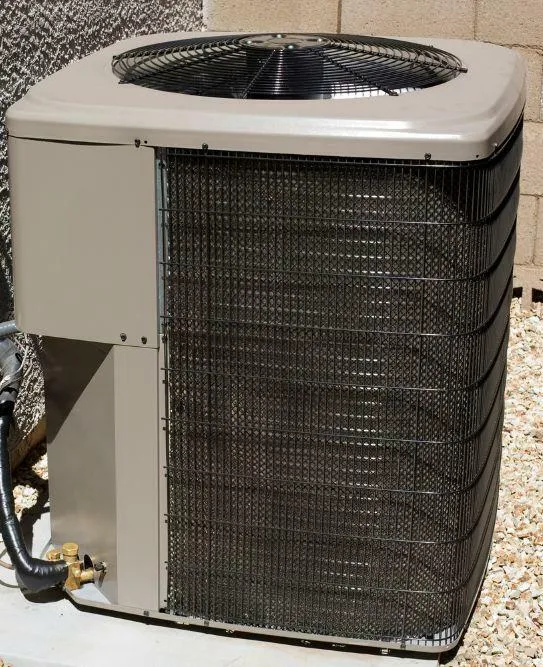
FINANCING OPTIONS ARE AVAILABLE
FINANCING OPTIONS ARE AVAILABLE
CONVENIENT PAYMENT OPTIONS | SIMPLE APPLICATION PROCESS
Financing starting at 7.99%
CONVENIENT PAYMENT OPTIONS | SIMPLE APPLICATION PROCESS
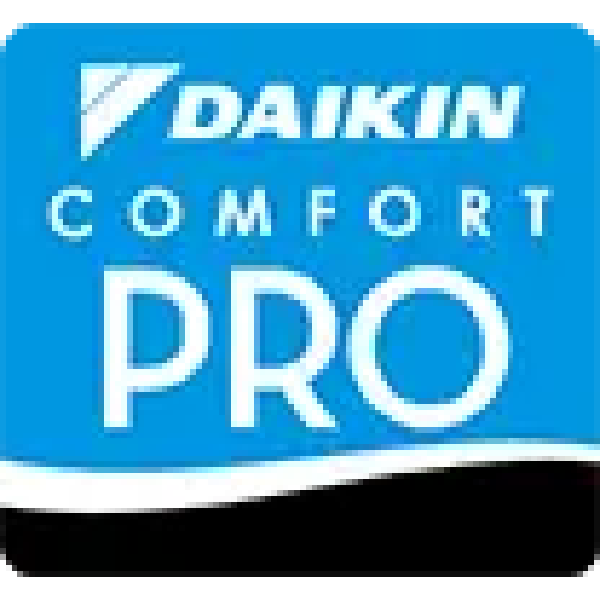
Comfy Air is proud to be a Daikin Dealer and services all makes and models!
San Marcos, TX
Buda, TX
Dripping Springs, TX
Kyle, TX
New Braunfels, TX
Seguin, TX
South Austin, TX
Wimberly, TX
Cibolo, TX
Lockhart, TX
Kingsbury, TX
Luling, TX


ALL RIGHTS RESERVED | COMFY AIR INC
TACLA60047C
PHONE
ADDRESS
HOURS OF OPERATION
- Mon - Sat
- -
- Sunday
- Closed

